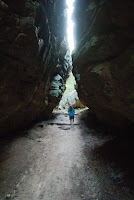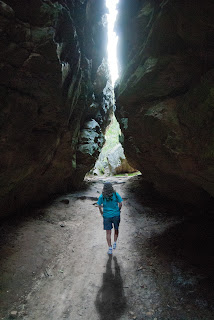Shutter speed is the second side of the Exposure Triangle. When you are in the Manual Mode anytime you change the value of any side of the Exposure Triangle the photo you take will get either brighter or darker. Last time we looked at ISO. If you increase the ISO setting from 100 to 200 the photo will be one stop brighter going from 200 to 400 will make it another stop brighter. OK, now it's time to look at shutter speeds. Imagine your lens like a pipe with water coming out and pouring into a bucket. More water in the bucket is like more exposure and more exposure means a brighter image. Our shutter acts like a faucet on the pipe. If we open the faucet for one second we will get a certain amount of water (brightness) in the bucket. If we open the faucet for two seconds we will get twice as much water (or brightness) in the bucket.
That's how shutter speed works in a nut shell. The longer the shutter is open, the more light is allowed to strike the sensor, and the brighter the image will be. Let's see what those shutter speeds are. A typical DSLR camera will automatically expose a photo for up to 30 seconds. If you use a speed that slow (long) your camera better be on a tripod. There are even ways to expose a photo for minutes, or hours, but right now let's assume your holding the camera in your hands and you want to point it at something and take a photo. Now what shutter speeds are we talking about.
Most photographers can learn to hold a camera steady enough to shoot at 1/60 of a second. From there as the light gets brighter, or the lens gets bigger around, the shutter speed can increase to 1/125 second, 1/250, 1/500, 1/1000, 1/2000,and maybe even 1/4000, or 1/8000 second. Back to "stops" again each of those speeds is one stop less than the one before. For example 1/2000 of a second is only half as long as 1/1000 of a second and therefore will expose only 1/2 as much. Remember 1/2 as much is one stop less (darker) and twice as much is one stop greater (brighter).
 |
| 1/320 Sec. Stops 'em on Second Base |
When we looked at ISO we looked at what else happens when we change it. With ISO remember as the ISO gets higher, while the image gets brighter, the noise gets greater. Well, what happens when we change shutter speeds? The less time the shutter is open the darker the image (exposure) but the other effect is that if the shutter is open for a shorter time movement has less effect. What movement? Well if I'm holding my camera very still and take a photo of a speeding auto, a slow shutter speed will show me a photo of the car as blurry because my shutter was open for 1/60 second and during that time let's say the car moved a foot so I see a one foot long blur. If I shoot the same car at 1/1000 of a second the car will move less that 3/4 inch so I still have a blur but 3/4 inch is much less noticeable than a foot. If my image shows the entire length of the car and space in front and behind it then 3/4 of an inch may not even be visible and I will have a very sharp image.
 |
| At 1/5 Sec. Truck Shows it's Moves |
The car is a example of subject movement. The other movement we worry about is camera movement. You can not hold a camera perfectly still. A telephoto lens adds to the problem since as it magnifies your subject giving you a close up of a deer at 50 yards, it also magnifies your camera movement. So, a higher (faster, shorter) shutter speed reduces blur from camera movement as well as blur from subject movement. So far it sounds like faster shutter speed are better, and in many cases that is right. However, many things we photograph do move and we are taking still photographs. If we look at an 8 x 10, glossy, full gcolor photograph, hanging in a frame of our favorite NASCAR moving at 120 miles per hour how do we know it's moving at all. The only way a still photograph can imply motion is if something is blurry. If as in my first example I put my camera and use a slow shutter speed everything will be sharp except the moving car(s). Anyone looking at the photo will know that the car was moving and the longer the blur the faster it will look.
.jpg) |
| This car was moving about 30mph and the camera 1/30 sec. |
Wait a minute, this is my favorite NASCAR, I want it to be sharp not blurry, but yeah, I want people who look at my photo to know it was moving 120 mile per hour, so now what? Combine and synchronize subject movement and camera movement. At right with the cameras shutter speed set at 1/30 sec I aimed at the car when it was 3/4 of a block down the street. I followed it as well as I could and when it was nearly in front of I pressed the shutter. I kept following the car as the exposure was made to keep it as sharp as I could. Above we have a sharp image and a blurred truck and here it's a blurred image with a sharp car. Two different was of implying movement in a still image.

Another use of a slow shutter speed with no noticeable blur is seen here in a full 30 sec. shot of the Hudson river. What the long exposure creates here is a smoother, more peaceful river than it would appear in a faster shutter speed. Learn to use your camera's Shutter Speed Preferred Mode (S or Av) and experiment with various speeds.
Very important: "There is no cost to digital experimentation", delete what you don't like.


.jpg)








.jpg)







.jpg)
.jpg)
.jpg)

.jpg)


.jpg)
.jpg)
.jpg)
.jpg)

